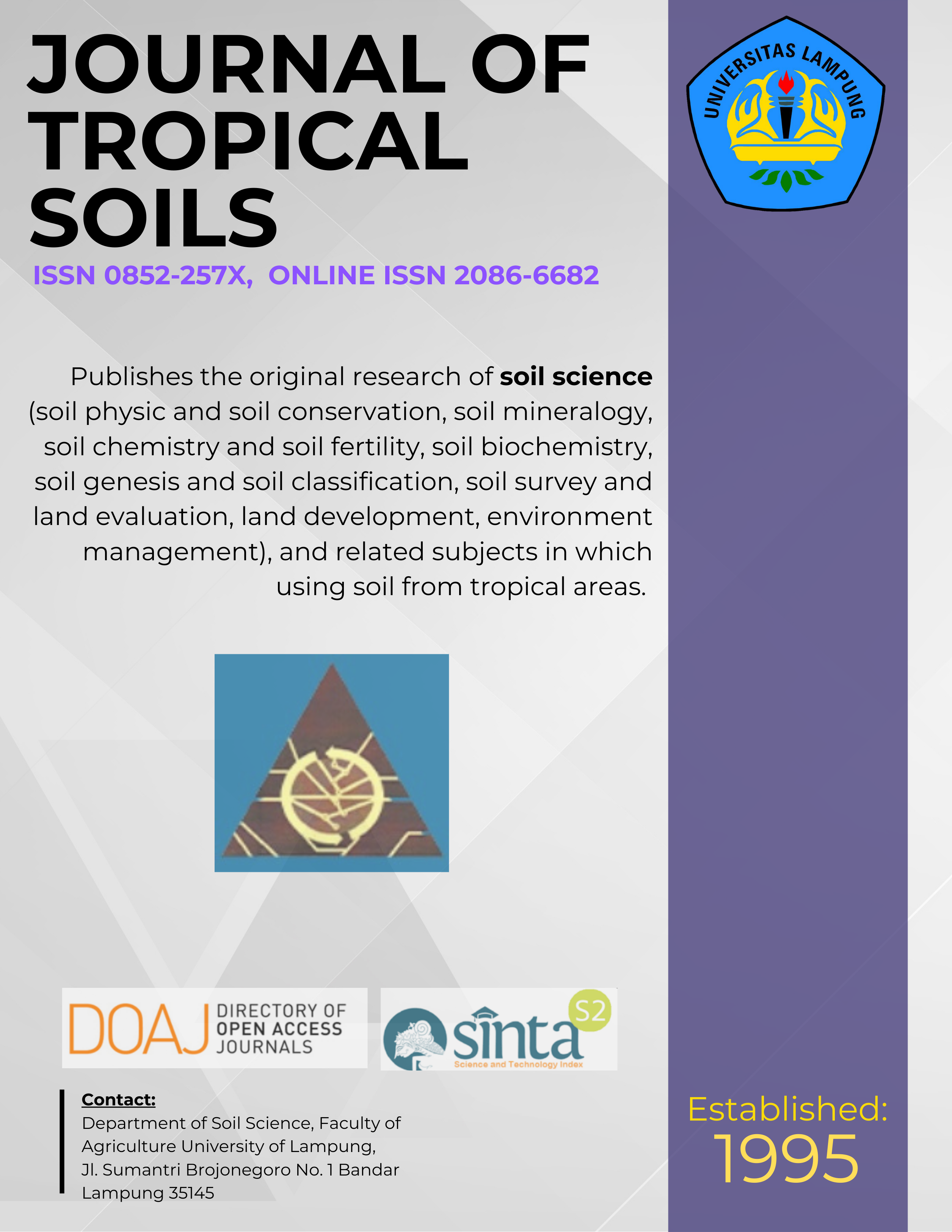Spatial Variability of Soil Nutrients Content Related to Rice Yield
Main Article Content
Abstract
Spatial Variability of Soil Nutrients Content Related to Rice Yield (T Syam): Soil nutrients content and its spatial distribution are very important data for site specific fertilizer management to supply sufficient crop nutrition. The study was carried out at the farmer paddy field in Rejomulyo Village, Metro Town District of Lampung Province. The aim of this study was to evaluate the relationship between soil nutrients content (N, P, K) and rice yield. Soil samples were collected before fertilizers treatment by the grid sampling method and GPS was used as a tool for precisely determine sample site location. Rice yield data were collected by small plot method on the each-of soil sample location. Spatial analysis using GS + software and statistical analysis using SPSS software. The result indicated that total nitrogen in the soil had a significantly correlation with the rice yield  (r = 0.95**) and their spatial distribution was relatively similar each others. Spatial maps of soil nutrients content could be used for the variable rate fertilizers treatment, especially for nitrogen.
Downloads
Download data is not yet available.
Article Details
Issue
Section
Articles
License for Authors
Authors who publish with this journal agree to the following terms:
- Authors retain copyright and grant the journal right of first publication with the work simultaneously licensed under a Creative Commons Attribution License that allows others to share the work with an acknowledgement of the work's authorship and initial publication in this journal.
- Authors are able to enter into separate, additional contractual arrangements for the non-exclusive distribution of the journal's published version of the work (e.g., post it to an institutional repository or publish it in a book), with an acknowledgement of its initial publication in this journal.
- Authors are permitted and encouraged to post their work online (e.g., in institutional repositories or on their website) prior to and during the submission process, as it can lead to productive exchanges, as well as earlier and greater citation of published work (See The Effect of Open Access).
License for Regular Users
Other regular users who want to cite, distribute, remix, tweak, and build upon author’s works, even for commercial purposes, should acknowledge the work’s authorship and initial publication in this journal, licensed under a Creative Commons Attribution License.
How to Cite
Spatial Variability of Soil Nutrients Content Related to Rice Yield. (2018). JOURNAL OF TROPICAL SOILS, 15(2), 153-157. https://doi.org/10.5400/jts.2010.v15i2.153-157

